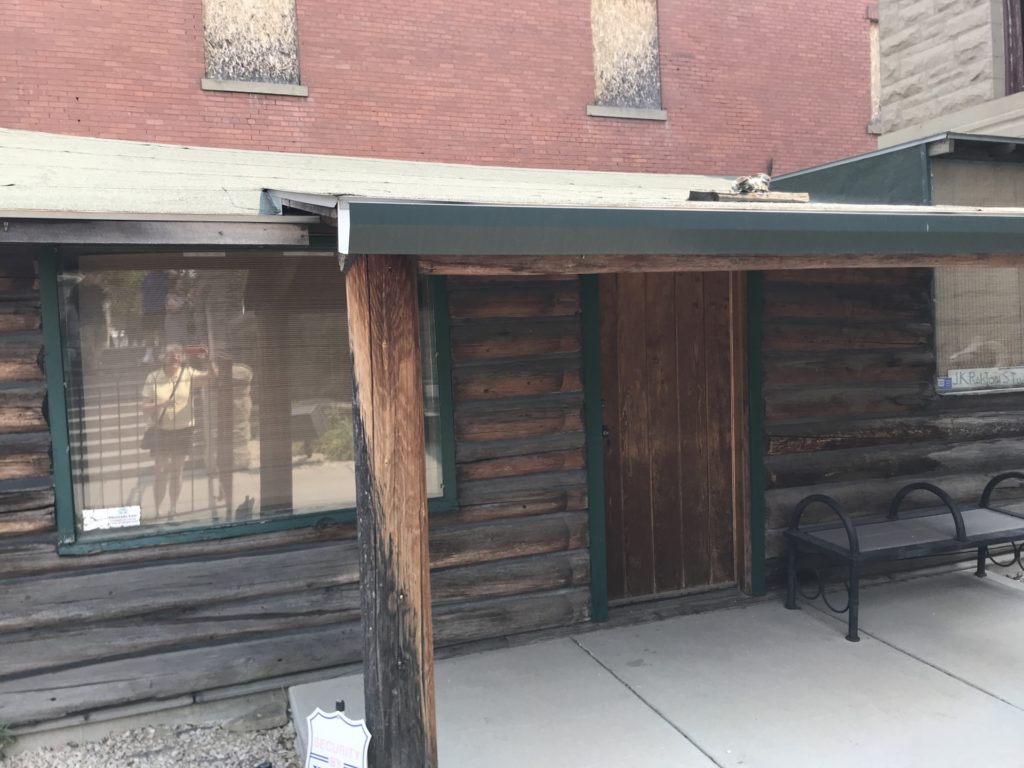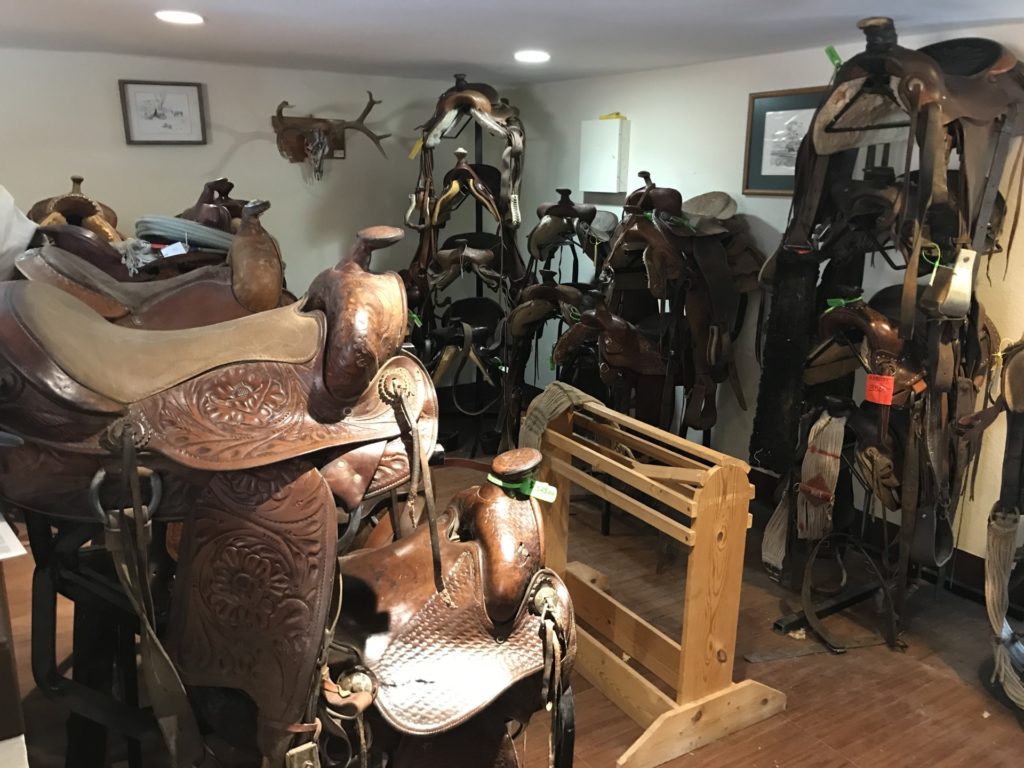On our last morning together, Johnny, Val, Tom and I headed to the Western Heritage Center in Billings, Montana. As the only history museum in the largest city in the state, we were expecting an impressive museum.

The exterior of the building was definitely impressive. The building was built by the Billings family in memory of their son Parmly who died at the age of 25 after living in Billings. The town of Billings was named after this family because Frederick Billings was the President of the Northern Pacific Railroad at the time Billings was founded. The Romanesque sandstone building with the steeply gabled roof was the first public library in Billings and was dedicated in 1901. Eventually the library was moved to a more spacious, modern building. In 1971 the former Parmly Billings Memorial Library became the Western Heritage Center.
Inside, the building houses a rotating collection of exhibits on the history of Billings and Montana. We paid our admission fee ($5 for adults, $3 for kids and seniors) and started wandering around. The large, central hall has a display on the history of the building and a topographic model of the Yellowstone River.
To the left was a wonderful display of photography by Barbara Van Cleve of women ranchers in Montana. The expressive black and white pictures evoked both the hardship and beauty of life on a ranch in this harsh land.
In the right annex was an exhibit entitled “The Story of Us: A History of Billings in 25 Objects.” Through the 25 objects, the curators arranged an exhibit that spanned the history of Billings, good and bad. The items were arranged in three areas: Ancestral Homelands, Creativity & Innovations, and Dealing with Diversity. Items included Frederick Billings’ personal briefcase, an original 1879 Montana Territorial map, and an early sugar bag from the Great Western Sugar Company. There was a KKK mask, a 1993 menorah from Congregation Beth Aaron, and a 2020 COVID-19 Montana Mask designed by local inventors using a 3D laser printer.
A small crowded room off this area had a display on the history of health services on Indian reservations. Part of the trust established by the United State Government when they forced Indians onto reservations was providing for health care. Because of this, reservation health care has always been substandard. When doctors are available, they are rarely from the tribes and don’t understand the culture. According to a 1923 Eugenics Law in Montana, physicians had the right to sterilize patients in public institutions. Reservations were considered public institutions and about 10% of the Native Americans who went to hospitals for childbirth were sterilized without their permission or knowledge. This law was not repealed until 1981.
Although this room was full of good information, it was presented on wordy posters. This meant you could either spend two hours reading all the posters or you just skimmed the information and looked at the pictures. I felt the information was too important to be buried in such a small, crowded space. No wonder Native Americans don’t trust government medicine.
After checking out these exhibits, we headed downstairs. The basement lobby was set up like the lobby of a western dude ranch. The rest of the basement was devoted to an exhibit on how they choose and develop exhibits. This seemed a little redundant. I felt the space would have been better used with an exhibit about something else. Although slightly interesting, I’m not really interested in how curators determine relevance. I would rather see the things they consider relevant.
Outside the museum was a small cabin used by J. K. Ralston as an artist’s studio for 40 years. The cabin was built in 1946. I had never heard of Ralston and none of his works were exhibited in the Western Heritage Center. But I guess it is cool to have a famous artist’s studio outside your sandstone museum.
The most interesting part of our visit to the Western Heritage Center was the Western Pawnbrokers and Bail Bond shop across the street. The wooden Indian advertising new and used tipis for sale drew us in. Inside it was a combination of Goodwill, antique, and surplus store. All kinds of used items including Native American regalia were for sale. You could buy a painted buffalo robe, a used saddle, or a buckskin jacket.
I was particularly taken by a Native American feather headdress. It was beautifully made and looked new. Several Native Americans were there selling things to the store owners. We had more fun looking around the pawn shop than we did looking around the museum. I did, however, feel a little sad that pieces of Native American families were for sale in this way. Tom reminded me that no one wants our antiques either. I think I saw more history in the pawnshop than I did in the Western Heritage Center.
After our visit to the pawnshop, it was time to head back to the hotel and say goodbye to Johnny and Val. We were only together for 26 hours, but they were jam-packed with adventure and good conversation. I hope it isn’t three more long years before we see them again.







